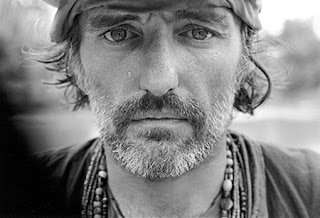I promise not to do this often, but we need to acknowledge the passing of Dennis Hopper. It probably depends how familiar you are with his work, but I feel like I just lost a crazy uncle or something.

I really don't care if you wish to dispute this; His best role was in Francis Ford Coppola's "Apocalypse Now" where he plays the photographer who has been living amongst the followers of the infamous Colonel Kurtz. Granted, he is only introduced in the last 30 minutes of the film, but his compulsive enthusiasm reignites the screen in such a 'lengthy' film.
One of my friends from film school once said to me, "Imagine if there was really film in those cameras. There must have been right? That's what Coppola would do."

This is not a role that Robert Redford or Clint Eastwood could have pulled off. Well, maybe they could have but I can't imagine it because Dennis truly goes off the deep end in this film. ( I mean, you have to be insane to follow Coppola into the jungles of South Vietnam for months of filming... but my confused admiration for the making of Apocalypse Now will have to wait for another blog article )
The easiest way to sum this up is... If you haven't seen him in Easy Rider, you don't even know Dennis Hopper:

This film puts hippies and beatniks to shame. Seriously. For the last twenty minutes of the film they just drop a ton of acid in a cemetery in New Orleans and film it... This production had drugs as a line item in the budget... Lets just say you should see it.
Philosophical? Existential? I'm not sure what they were going for when they made this film ( because they were probably too high to have a cohesive vision ), but it is certainly a masterpiece.

















